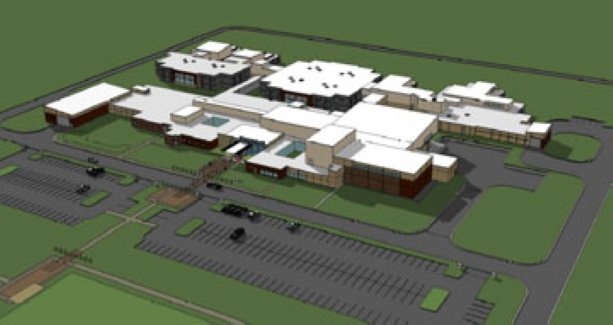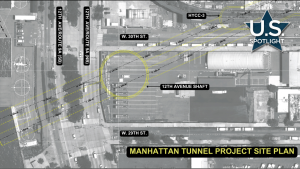Construction on the $247-million South West Detention Centre in Windsor, Ontario will begin this summer. In response to concerns from the public, the jail will be widely set back from area roads and will have somewhat of a disguised exterior and be blocked from view by berms and landscaping.
WINDSOR, Ont.
A site for a new jail that was extremely controversial just a couple of years ago passed site plan review by Windsor City Council in July with barely a whimper.
Construction on the new $247-million, 315-bed South West Detention Centre, will begin this summer and should be completed in two years.
■ Bondfield Construction and partners set to build Windsor, Ontario prison
■ Bondfield Construction to build prison in Windsor, Ontario
Opponents — including residents and city councillors — were up in arms over the location of the 30-acre jail site at the entrance to Windsor along Hwy. 401 and Walker Road.
It’s near a big box retail centre, a church, and in an undeveloped area zoned for mixed used development including residential.
The building will replace the 80-year-old Windsor Jail as well as jails in Sarnia, Walkerton and Owen Sound, Ont. Some local officials had wanted the jail closer to downtown in the Brighton Beach area along the Detroit River. But that site was rejected in part because it was in an area that might be required for the proposed new Detroit River International Crossing (DRIC) bridge between Windsor and Detroit.
City planner Rinkey Singh and said that after public consultations, community concerns were incorporated into the jail’s location and design.
The jail will be widely set back from area roads and will have somewhat of a disguised exterior and be blocked from view by berms and landscaping.
The city demanded that the jail also be hidden from Hwy. 401 as the nearby interchange is a “major civic entrance” to Windsor, according to the site plan report.
Singh said the province also incorporated a public recreation area on site as a gesture of goodwill or “citizenship.” This will be a standard soccer field and an adjoining cricket pitch. These will be separated from the building by a 234-space parking lot.
Bruce Gray, the Ministry of Infrastructure’s vice -president for project delivery, said the jail’s east side will incorporate a façade — including textured precast panels — that make it look much like any other structure. “It’s like walking into a civic building,” he said.
This facility appears to go the furthest of any correctional facility in Ontario by the degree of community access to the site. Besides the outdoor recreation fields there will be access — by group appointment only — to an indoor gymnasium.
Greg Flood, spokesman for the Ministry of Community Safety and Correctional Services, said the Maplehurst correctional complex in Milton, Ont. also has a baseball field open to the public.
Gray said the South West Detention Centre will be the second P-3 or Alternative Financing and Procurement (AFP) jail in the province’s history. The Toronto South Detention Centre, now under construction, is being similarly built.
Forum Social Infrastructure, will build, finance and maintain the Windsor facility for 30 years and overall costs reflect that time frame.
Concord Ont.-based Bondfield Construction is the general contractor, NORR is the designer and long-term operator, and Johnson Controls will handle the maintenance.
The facility makes generous use of landscaping and other Crime Prevention Through Environmental Design (CPTED) principles.
Randy Atlas a criminologist and Florida-based expert on prison design, said location for a maximum security facility, such as this one, really isn’t a problem. But it will “have to provide a very secure perimeter to prevent intrusions or escapes.”
The facility’s east wall acts as the security barrier and there will be three sets of fencing around the prison’s undeveloped west side, including an almost 18-foot-high security fence and a four-foot-high management fence to “delineate the property from outsiders,” Gray said.
Atlas said it’s rare to see a prison make such great use of CPTED principles because governments typically do “not have any budget to do so.”
Atlas said opening the jail site to public use “is exceptional and could only be done in Canada” because “the U.S. is an out-of-control litigious society. If anyone got hurt on the real estate they would sue the state for negligence.”
This will be the second jail in Ontario designed to LEED Silver standards.
Atlas said this is probably easier to do with prisons since they are “self-contained cities that must be totally self sustained in the event of power failure or natural or manmade disaster.”











Recent Comments
comments for this post are closed